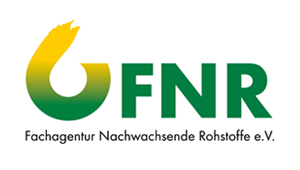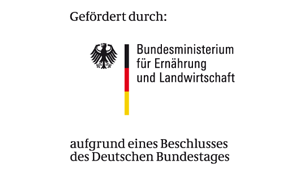Project
Biotechnological production of Itaconic acid

Biotechnological produced itaconic acid as raw material for the chemical industry
Itaconic acid is one of the most important bio-based building block chemicals. The potential market for itaconic acid is large with a wide range of applications. To develop a more economical process it is important to optimize the fermentation process even further.
Background and Objective
Itaconic acid is produced biotechnological with the fungus Aspergillus terreus using sugar as substrate. Although this process is carried out industrial more than 50 years, the maximum attainable concentrations of 90 g/L are significantly below those of comparable processes such as citric acid production. The costs of the biotechnological production of itaconic acid are mainly limited by low product concentration, low productivity and low yields. Therefore the main goal of the current work is a process optimization using intelligent, innovative strategies for the biotechnological production of itaconic acid.
Approach
At first a scale down of the fermentation process to µL scale should be carried out. This would be a requirement for an efficient subsequent media optimization. More fermentation parameters should be varied at bioreactor scale.
Data and Methods
A reduction of the scale was performed in microtiter plates, in which subsequently a media optimization was carried out. In a 400 mL and 1 L bioreactor system in particular the influence of the pH value was examined for the product formation.
Results
During the project period, a simple system was established with low standard deviations in the μL scale for mutations and a process optimization of biotechnological itaconic acid production with the filamentous fungus Aspergillus terreus. It shows very good correlation to the cultivation in shake flasks.
Furthermore, a new method of producing spores was established. Conducting a pH shift induced the formation of submerged spores. When using the submerged spores as inoculum for cultivation, the lag phase is shortened, the productivity is comparable to previously used spores from surface cultures, and the duration of cultivation is reduced.
The unique pH shift also shows a positive effect on the final itaconic acid concentration (110 g/L itaconic acid after 7.6 days). Performing a pH shift, with subsequent regulation of the pH, results in a significant increase of the final concentration to 146.1 g/L itaconic acid after 12.6 days cultivation with a yield of 0.59 (w/w). This is an increase in the final concentration of 68 % compared to the published literature. In a final experiment, the previously optimized parameters for the itaconic acid production were combined. Here, after 4.7 days of cultivation, a final concentration of 129.3 g/L itaconic acid was reached. This corresponds to a productivity of 1.15 g/L/h. The yield was with 0.58 (w/w) higher compared to the yield of the reference with 0.53 (w/w). The project has shown that the transfer to μL scale is very successful feasible and contrary to the current literature there is no need for a phosphate limitation during itaconic acid production. Compared to the initial situation, 90 g/L itaconic acid after 7 days, the final concentration was significantly increased with a simultaneous reduction of the fermentation time, so that the knowledge gained in the project is of high scientific and industrial value.
Thünen-Contact

Involved Thünen-Partners
Duration
8.2010 - 7.2013
More Information
Project funding number: 22020908
Funding program: FNR
Project status:
finished
Publications on the project
- 0
Hevekerl A, Kuenz A, Willke T, Vorlop K-D (2013) Biotechnological itaconic acid production - time saving optimization. In: 2nd European Congress of Applied Biotechnology and 9th European Congress of Chemical Engineering, The Hague, The Netherlands, April 21-25, 2013. European Federation of Chemical Engineering, p 1
- 1
Hevekerl A, Kuenz A, Willke T, Vorlop K-D (2012) Filamentöse Pilze in Mikrotiterplatten - ein effizienter Weg zur Optimierung der Itaconsäureproduktion mit Aspergillus terreus. Chemie Ingenieur Technik 84(8):1198-1199 , DOI:10.1002/cite.201250101
- 2
Kuenz A, Hevekerl A, Willke T, Vorlop K-D (2012) High level itaconic acid production with Aspergillus terreus. In: Book of abstracts : symposium on bio-based production of organic acids : bbpoa2012 ; May 10th to May 11th, 2012. Frankfurt a M: DECHEMA, p 24
- 3
Kuenz A, Gallenmüller Y, Willke T, Vorlop K-D (2012) Microbial production of itaconic acid: developing a stable platform for high product concentrations. Appl Microbiol Biotechnol 96(5):1209-1216, DOI:10.1007/s00253-012-4221-y
- 4
Kuenz A, Willke T (2011) Natürliche Kunststoffe aus Zucker? Zuckerrübe 60(1):66

![[Translate to English:] [Translate to English:]](/media/_processed_/3/6/csm_Hintergrund-Ausschnitt1_9daaef6b89.jpeg)
![[Translate to English:] [Translate to English:]](/media/_processed_/3/6/csm_Hintergrund-Ausschnitt1_0bd7111163.jpeg)







